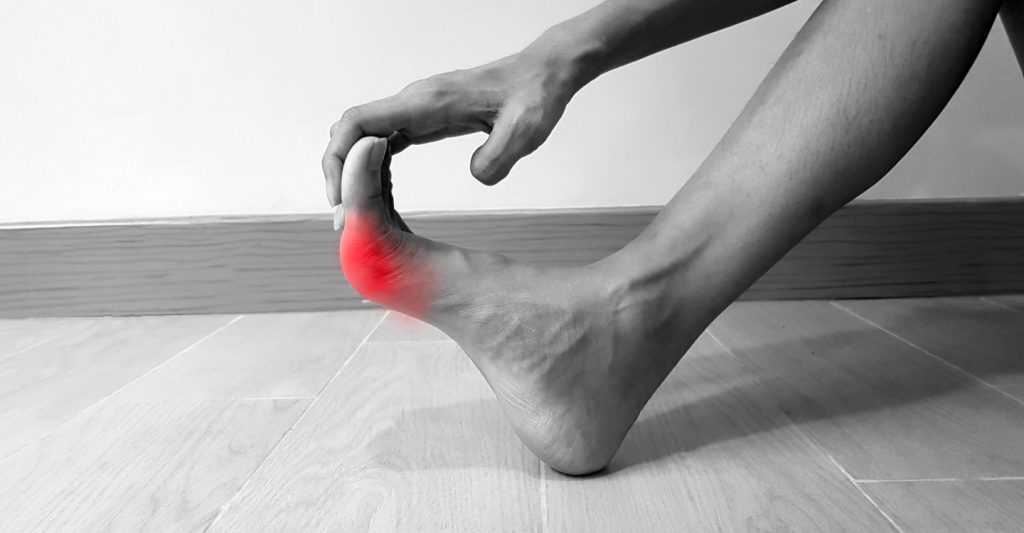The pain in the big toe and ball of the foot is caused by sesamoiditis. Sesamoiditis is a metatarsalgia type and refers to the inflammation of the tiny sesamoid bones located within the tendons beneath the big toe joint. These bones play a crucial role in allowing your big toe to bend and push off the ground while walking or running.
Did you know that your foot contains 112 ligaments, 33 joints, and 26 bones — not to mention a large highway of blood vessels, tendons, and nerves? With such a complex operation going on, your foot is highly susceptible to injury and pain. Pain in the ball of the foot or big toe can indicate a few conditions, such as bunions, metatarsalgia, hallux rigidus, or Morton’s neuroma, which may require evaluation and treatment from your foot surgeon.
Dr. Jason Gold, DPM, FACFAS | Board-Certified Foot & Ankle Surgeon
What causes metatarsalgia?
Athletes that engage in a large amount of running and jumping may experience pain in the ball of the foot or big toe and may develop marked inflammation on the balls of their feet, which is known as metatarsalgia. Wearing ill-fitting shoes and shoes that don’t provide enough shock absorption may also be culprits in developing the condition.
Metatarsalgia Symptoms
Symptoms include an aching or sharp pain in the ball of the foot, shooting pains, numbness, and burning near the toes.
Types of Metatarsalgia
Suppose there’s a problem with the bones in the ball of your foot, and they don’t fit well with the other parts of your foot. In that case, you might develop a condition called primary metatarsalgia. That cause discomfort and pain in the ball of your foot.
Foot doctors divide the causes of metatarsalgia into three groups: primary, secondary, and iatrogenic. Examples include:
Bunions (hallux valgus)
Pain in the side of the big toe usually indicates a foot deformity called bunions, which cause your big toe to point outward. Symptoms of bunions include soreness, redness, foot pain, numbness, burning, and inflammation. Arthritis, ill-fitting shoes, and genetics are common causes of bunions. Methods for treating bunions include taping, icing, medication, injections, activity reduction, and orthotic devices. In many cases, surgery may be the only way to eliminate bunion pain completely.
Hallux Rigidus
A form of degenerative arthritis, hallux rigidus causes foot pain, inflammation, and stiffness at the big toe base, which gradually leads to difficulty in bending your big toe. Medication, physical therapy, orthotic devices, and shoe fitting adjustments are typical treatment methods. If pain isn’t reduced using these methods, surgery may be recommended.
Morton’s Neuroma
If you feel like you have a small object like a marble under your foot when you walk, you may have a condition called Morton’s neuroma. Morton’s neuroma is characterized by a thickening that surrounds the nerves controlling your toes. Numbness and burning are complaints of patients that are suffering from this condition. Avoiding tight shoes and high heels can treat the condition, but steroid injections and orthotic devices might also be needed to alleviate this type of foot pain.
How is metatarsalgia treated?
Metatarsalgia is treated by wearing the correct shoes, using arch supports, over-the-counter pain relievers, ice, and rest.
Contact Foot, Ankle & Leg Vein Center to learn more about this condition and available treatments. We are a team of award-winning podiatrists in Boca Raton, FL, and Boynton Beach, Florida.



